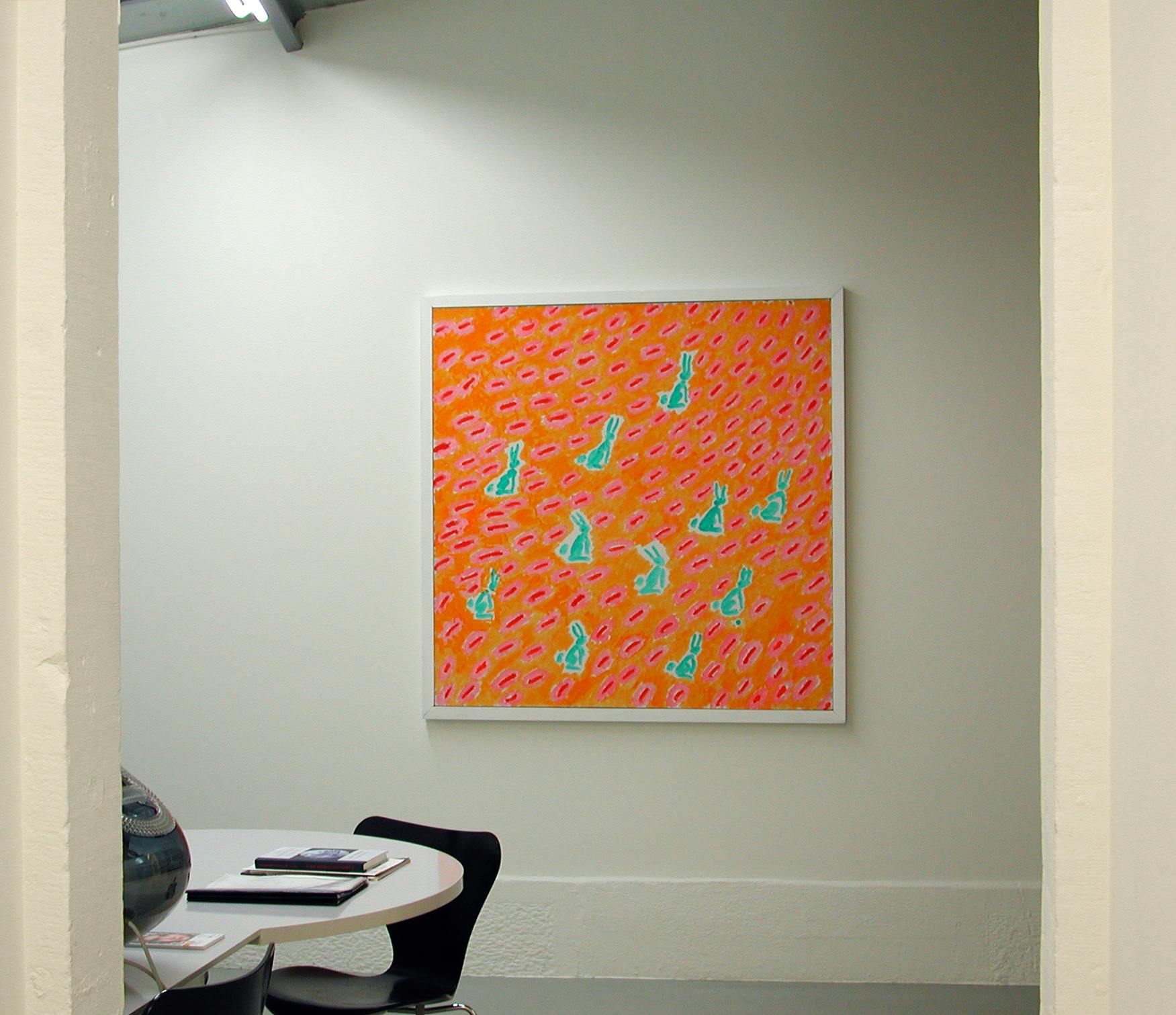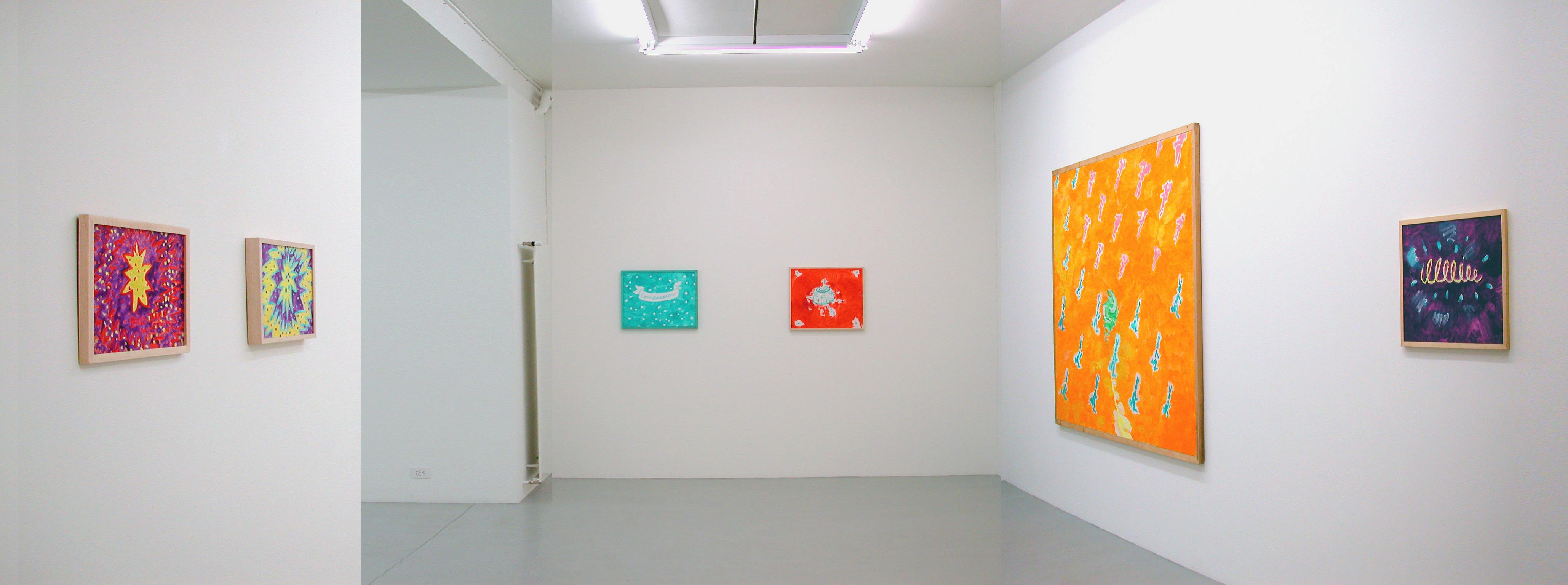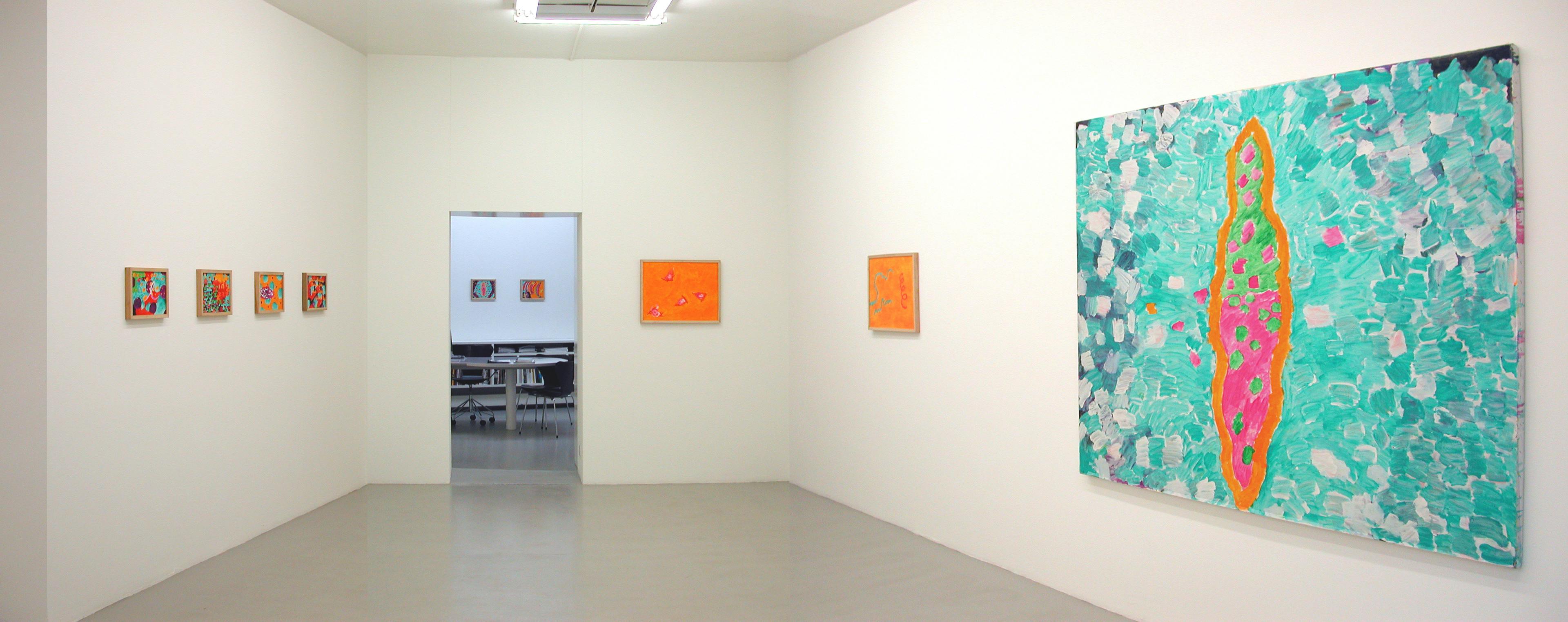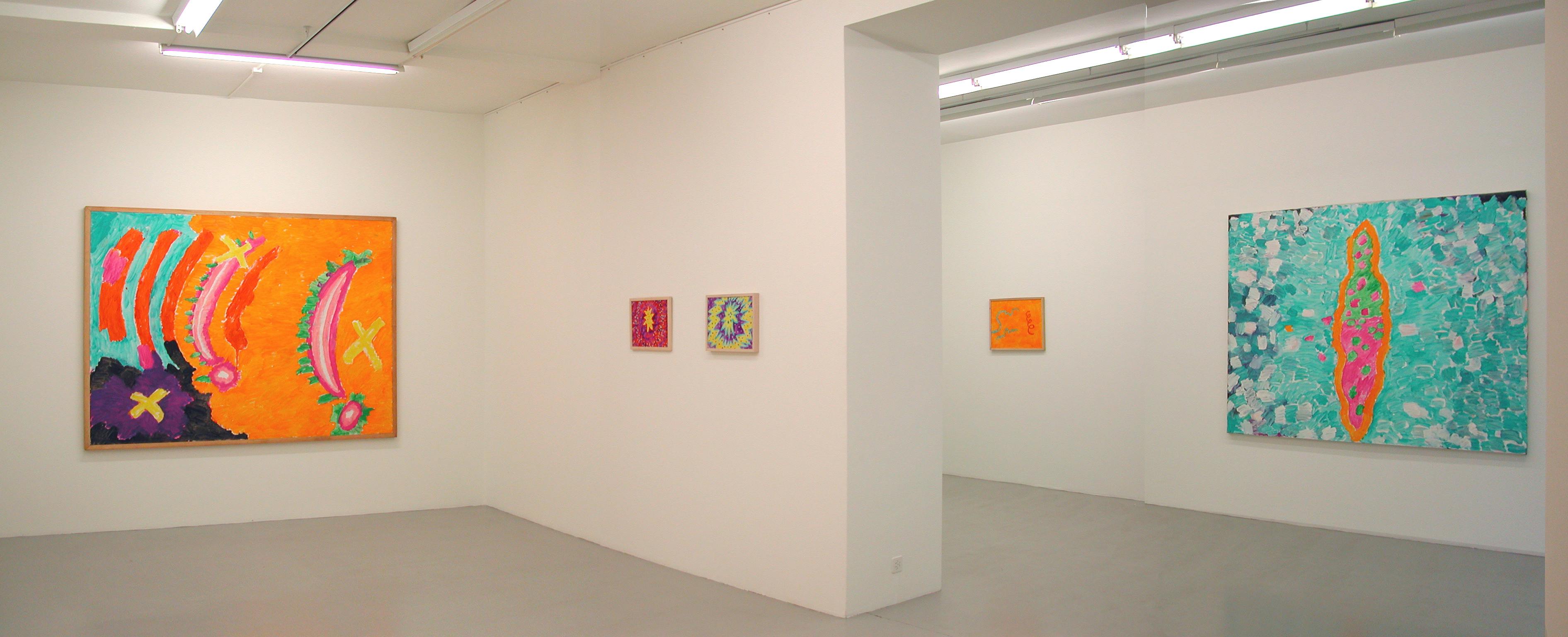We are pleased to be able to present a substantial group of paintings by the American artist Paul Thek (b. 1933 Brooklyn, New York – d. 1988 New York) that were produced in New York in the 1980s after his return from Europe.
Many areas of Paul Thek’s work can be reconstructed today only with the help of catalogues, photographs, texts and interviews with the artist. His installations, the environments produced collaboratively with other artists and his works in progress, which were produced for among others the Stedelijk Museum, the Moderna Museet, dokumenta 5 under Harald Szeemann as well as the 1980 Venice Biennale, are lost irrevocably. Since only individual, disparate elements of these works remain, Thek’s paintings and gouaches have become part of his artistic legacy. Indeed the artist appears in these works to revive the entire cosmos that he conceived in his installations. Rabbits, snakes or ships thus appear as well as letters and words in the paintings that, applied with loose brushstrokes, become signs, alluding symbolically to an imaginary space outside the image. They remind us that Thek, who in an interview with Harald Szeemann once said that art was liturgy, was imbued with a religious understanding of art and concerned himself intensively with various symbolic worlds from religion and mythology. It was their transformation into and impact on the real world that he investigated. The question concerning the boundary between the holy and the profane, earthly limitation and infinity, however this may be understood, and the possibility of how it could be overcome drove Thek throughout his life. It informed his art and often imbued his work with the character of a memento mori.
Thek’s paintings too are characterised by a strongly expansive moment. This is revealed in the composition of an image often structured outwards from the centre as well as repetitive elements that develop a powerful dynamism. In terms of the content too Thek passes from the limits of a superficial understanding of the image to a more comprehensive figurativeness that also incorporates synaesthetic associations. This evocative blending of various sensory stimuli is demonstrated by his use of letters and the graphic shorthand, recalling comics, that he employed to visualise noises. It is precisely the huge wooden frames that make us aware of the expansive moment of the gesturally executed paintings. It is as though the frames secure the paintings before they evaporate in their fragility. At the same time they emphasise the character of the image as an object and refer with their own physicality to the observer’s bodily induced, processual perception that Thek made a subject not only of his site-specific environments but already in his early series ‘Technological Reliquaries’. Similar to his installations
Thek also developed, with minimal means and often only hintingly, an artistic cosmos in his paintings that in its openness and multiple meanings contains a poetic commentary on this world. [Text: Iris Wien]







